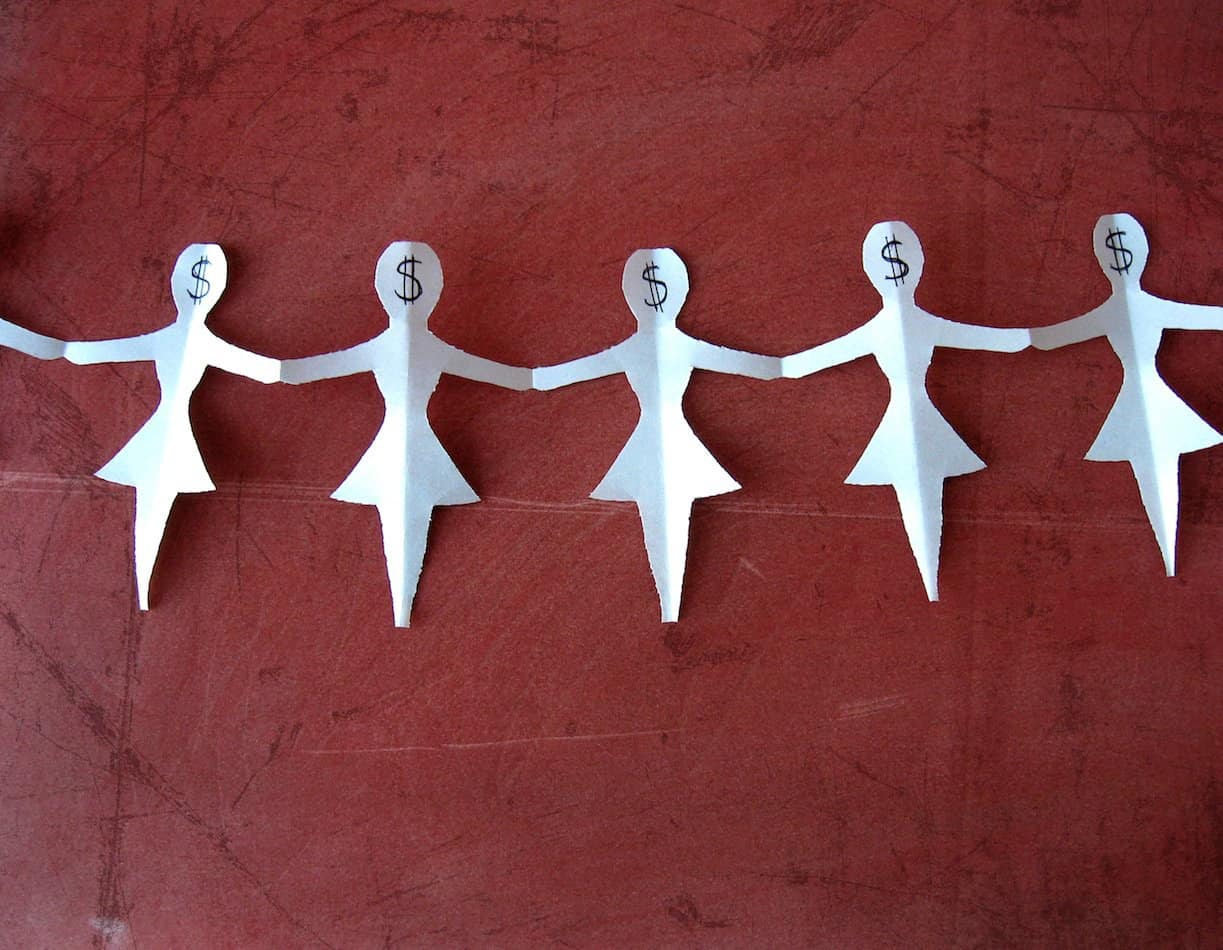The real story behind egg harvesting
Calla Papademas was a 21-year-old Stanford senior with a fashion-model body, above-average

grades, and a big heart. She had a boyfriend, planned to go to graduate school, and hoped to make a difference in the world. Enter the fertility industry, the modern dreamweaver of infertile women’s deepest hopes and dreams, an emerging Daddy Warbucks to thousands of young women across the United States who want to get rid of their credit card balance and go to graduate school without being saddled with tens of thousands of debt even before they bring home their first paycheck.
Papademas approached an egg donor agency. Following a whirlwind screening process which consisted primarily of questions about the hair color and IQ of her extended family members and in which she was never asked if she had any pre-existing health conditions, she was declared a prime candidate for donations. Soon after, Papademas was told that her profile had found a taker who was offering $50,000 dollars for her eggs. After agreeing to be a donor for this couple, she was then informed this couple was no longer available but that another recipient was interested—at a lower price.
She moved ahead with the process, despite the lower offer, and received a supply of the drug Lupron, intended to hyper-stimulate her ovaries so that multiple eggs could be harvested. On the average, 10 to 15 eggs are harvested at one time, although some harvests can yield more. What was not made clear to Papademas (and what is typically not explained to donors) was that each woman possesses a limited number of eggs, so that with each donation, she decreases her supply and thereby directly affects her own chances of motherhood in the future.
Lupron’s intended purpose is to provide relief to men in the last stages of prostate cancer; Papademas was told that this was an “off-label use” of Lupron. She was also told that the consent forms were standard. In talking about this experience in a deeply moving video interview, she admits that the hurried nature of the selection and consent process were such that “there was not much opportunity to think things through.” She also acknowledges that she felt “chosen” and was grateful for the opportunity to bring other women so much happiness.
But it was not meant to be. Papademas had a minuscule tumor on her pituitary gland, a fact never ascertained by the fertility clinic and, within three days of taking Lupron, she found herself in the hospital after suffering a major stroke. After a long recovery period, she is now able to resume her life—after a fashion. She will never be able to bear children and will be on hormone replacement treatment for the rest of her life.
And her relationship with the fertility clinic that encouraged her to continue taking the Lupron, even after she called them about increasing migraines and nausea? She was offered a “drop cycle” check for $750 and told that she was no longer a good option.
Big business, unregulated
Calla Papademas is a victim of a $3-billion-a-year fertility industry driven by the desires of infertile couples.The value of women like Papademas is based on their ability to produce eggs; if their first donation results in a pregnancy, they are considered to be valuable commodities and encouraged to donate again. If, as in the case of Papademas, there is no pregnancy, they are tossed aside.
I first learned about egg donation when I attended a congressional briefing on Capitol Hill in November of 2007, cosponsored by Marcy Kaptur (D-OH) and Joe Pitts (R-PA). Testimonies were provided by Jennifer Lahl, national director for the Center for Bioethics and Culture (CBC) Network and one of this country’s leading voices on the perils of egg harvesting, and Dr. Jennifer Schneider, a physician, medical researcher, and the mother of a young woman who donated eggs three times—before dying of colon cancer at the age of 31.
According to Schneider, who, following her daughter’s death, conducted extensive research on the long-term risks of cancer in egg donors, “there is hardly anything known” about potential consequences to the donor—not because there is no relationship, she stresses, but rather because no one keeps records. When Schneider contacted the egg broker to let them know that her daughter had died of a potentially genetic disease—reasoning that parents of babies conceived from Jennifer’s eggs would want to know about this so that their children could be tested—she was told that no long-term records were kept. It had been only six years since her daughter’s death.
What does this all mean? It means that young women are being subjected to ovarian hyperstimulation where no long-term studies to assess risks to the women have been conducted and where little effort is made to link children conceived with harvested eggs to potential long-term hazards.
According to the CBC Network’s Lahl, the business of egg harvesting needs to be addressed because “it is exploitative and it is dangerous.” Furthermore, she also contends that unregulated practices abuse the proper role of medicine by letting physicians take on the role of service provider to the client (mother-to-be) and potentially denying the rights and well-being of the children who are conceived as the result of harvested eggs. (Think “Octomom.”)
A discussion of long-term risks does not speak well for an industry based on good feelings, however, and earlier efforts to establish an egg donor registry (similar to the organ transplant registry) have been thwarted. Prospective donors who inquire about potential risks to their own health are told on the required consent forms that the procedures harbor “no known risks.” But this is deceptive, according to Elaine Petty, an expert on bioethical issues of life who says that data of the long-term risks of the donation process have never been compiled. According to Petty, an egg donor registry is a minimal and crucial commitment to protect the health of these young women.
Trafficking “raw materials”
I was particularly struck with the exploitative side of the practice and in April of 2008 co-authored an article with Jennier Lahl in which we identified egg harvesting as one of the newest forms of human trafficking to emerge as a result of modern technology. We made this claim on the basis that young American women are being offered large sums of money (from $5,000 to $10,000 and more) each time they donate eggs. In some cases, for the right “fit,” couples have offered as much as $100,000 for a picture-perfect genetic scorecard. Unfortunately, this only goes as far as appearance and IQ; the motto of the IVF industry could very well be “Don’t bring me any bad news.” Such sums of money, when put up against credit card debt and tuition payments, are sometimes too hard to resist. In human trafficking terms we would call it the exploitation of economically vulnerable women.
The Europeans have already taken a stand against this practice. In March 2005 the European Parliament issued a resolution specifically condemning the trade in human eggs. A direct response to the exploitation of Eastern European women, “The European Resolution on the Trade in Human Egg Cells” condemned the practice, stating that “harvesting egg cells poses a high medical risk to the life and health of women.” The resolution went on to say that, “despite the possibility of serious effects on women’s life and health, the high price paid for egg cells incites and encourages donation, given the relative poverty of the donors.” The resolution also recognizes “that the human body should not be a source of financial gain and that particular attention should be paid to vulnerable individuals at risk of becoming victims of trafficking, particularly women,” who should be protected by measures so that they “do not become ‘suppliers of raw material.’”
The Europeans are taking the right tack here, but the opposing forces are huge. American women want children. They want them so badly that when their own bodies back-fire and don’t perform according to the “happily ever after” script, they solve the problem by going elsewhere. And this “elsewhere” leads to bypassing the high prices required for eggs in the US, where egg sales are still legal, and going instead to the developing world.
Let’s spell this out clearly. Selling eggs in the United States is legal; the industry arbitrarily identifies a general price range ($10,000), and, while the amount is supposed to be regulated, it is far from such, with couples willing to pay much more for “designer” babies. Consider this ad: “Help our dreams come true: A loving, caring couple seeking egg donor. Candidate should be intelligent, athletic, blonde; at least 5’10”, have a 1400+ SAT score, and possess no major family illnesses. $50,000.” Does a couple want a musician, a linebacker, a fourth for bridge? Just advertise.
The guidelines of the American Society for Reproductive Medicine call for a maximum donor reimbursement of $10,000, but no regulation is attached to the guideline. Some clinics adhere to it, and others do not. Add to this the high fees charged by the clinics themselves, and the cost of eggs can be very high to an infertile couple. The highest ad documented to date offered $100,000, but Elaine Petty claims that at a certain point there is a “bait and switch” going on. Young women are lured in by promises of large sums, but these donors disappear, as they did in the case of Calla Papademas. There is no record of $100,000 ever having been paid.
Reproductive tourism
For Western women the alternative is to seek out cheaper options, and this means going to countries such as Spain, the Czech Republic, Ukraine, Moldova, or Russia, where egg donation—but not sales—remains legal and where women may receive some form of compensation, termed “valuable consideration.” These amounts are set by each country and can range from 500 to 900 Euros in some EU countries. Couples choose a vacation spot, and while they are there receive eggs harvested from a local citizen, for whom the small monetary compensation often exceeds a month’s wages. Not only do the buyers receive eggs and the implantation procedure at a cost much lower than they’d find in the United States, but some agencies even offer “package deals” that include tours of the country.
So Western women go overseas where they can buy eggs from young women who have never been told of the risks of donating, who have been made to believe that the only way they can make a living is to sell their bodies or body parts, and where no follow-up is done on their health or well-being. Just like in the United States, right? Except that in these instances the exploitation implied in the transaction is further intensified by the fact that it takes advantage of poor people in order to obtain bargain rates. Let’s be honest: The only reason to go to Ukraine for eggs is to pay less because the Ukrainian woman gets less.
While some critics claim that the practice is highly exploitative, others — including human traffickers who justify selling young women into sexual slavery—claim that it is the best thing going for poorly educated, low-income women. Freddy the Pimp, a trafficker in Northern Peru, told me quite sincerely that his services were beneficial—families were getting a cut, the girls could keep some money, too, and the tourists kept coming back to his small town. “Everyone is happy,” he said, presenting it as a win-win situation.
It’s not the first time in the past decade that Western women have capitalized on the misery of Third World women. In a telling Atlantic Monthly article titled “How Serfdom Saved the Women’s Movement — Dispatches from the Nanny Wars” author Caitlin Flanagan describes how “America’s newly liberated class of educated professional women found itself presented with an army of poor, easily exploited women from other countries who could take care of their children and clean their houses.”(5) And, where many reputable agencies and families abide by immigration and fair labor laws, many don’t. Public officials confess to not filing social security for their nannies, and US Department of Justice lawyers prosecute dozens of cases annually where foreign women come to this country to work, only to be reduced to the status of house slaves. These are bona fide cases of human trafficking, perpetuated by Americans within the United States.
The exploitation that is intrinsic to reproductive tourism is particularly ignominious, because it is entirely couched in language of happiness and self-fulfillment — both for the donor, who is made to feel as if she is doing something noble (while she is in fact incurring potential harm to herself and her future capacity for motherhood) and for the infertile woman, who feels entitled to bear a child even if nature dictates otherwise. These client mothers are not evil; they have simply bought into the consumer dream that every good is attainable — for a price. At the very minimum, such a sense of entitlement should be mindful that the exchange of an egg involves an existing human being, the egg donor, whose rights and expectations for happiness also need to be honored.
Beyond the physical risks to the egg donor, one wonders about the long-term psychological effects of this trade in human eggs. When a couple approaches family planning as a consumer transaction, treating it in much the same way as they might order a customized car or purchase a pedigreed pet, what happens on that inevitable day when their 2-year-old collapses in her 10th tantrum of the day or their 13-year-old rolls his eyes at them for the umpteenth time—when, in other words, their children find themselves in the most natural (and most unpleasant) stages of their developmental process? One day they will look at their “designer” children and wonder, “Where did you come from? This is not what I bargained for.”
Every parent occasionally asks the “where did you come from?” question — and knows, deep down, the answer—that the acorn doesn’t fall far from the tree. They work through the rough times and love their children as the imperfect progeny of their imperfect selves. But what do “designer” parents do? Having paid top dollar for their dream kid, do they resent the child who doesn’t live up to the egg donor agency’s promises? Can they take their purchased children as they are—inevitably less lovely, less bright, less achieving than the advertisements led them to believe they would be? Perhaps we’ll see the rise of a new human-trade industry one day: used kid lots where one can trade in and trade up for a better model.
As head of the Anti-Trafficking Assistance Unit at the Organization for Security and Cooperation in Europe (OSCE), Michele Clark found herself, in the mid ’90s, in the middle of the first wave of women from the former Soviet Union being trafficked into the Middle East. She continued her work, which has ranged from field research and undercover investigations to policy development and implementation, both in the US and internationally, as co-director of The Protection Project at Johns Hopkins University School of Advanced International Studies (SAIS). She is currently teaching courses in human trafficking and women’s human rights at George Washington University in Washington, DC.


